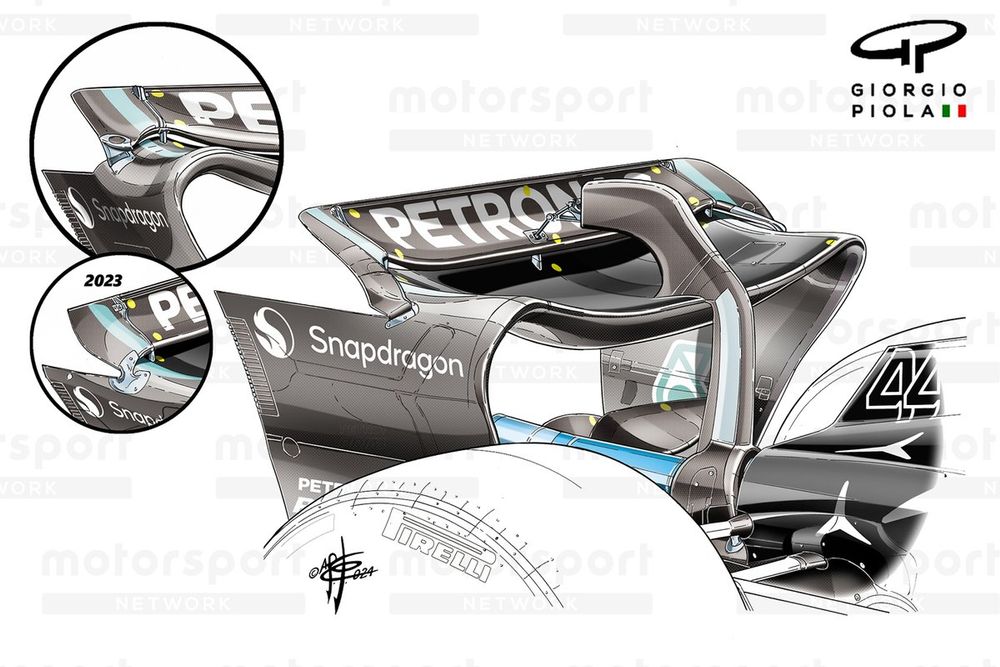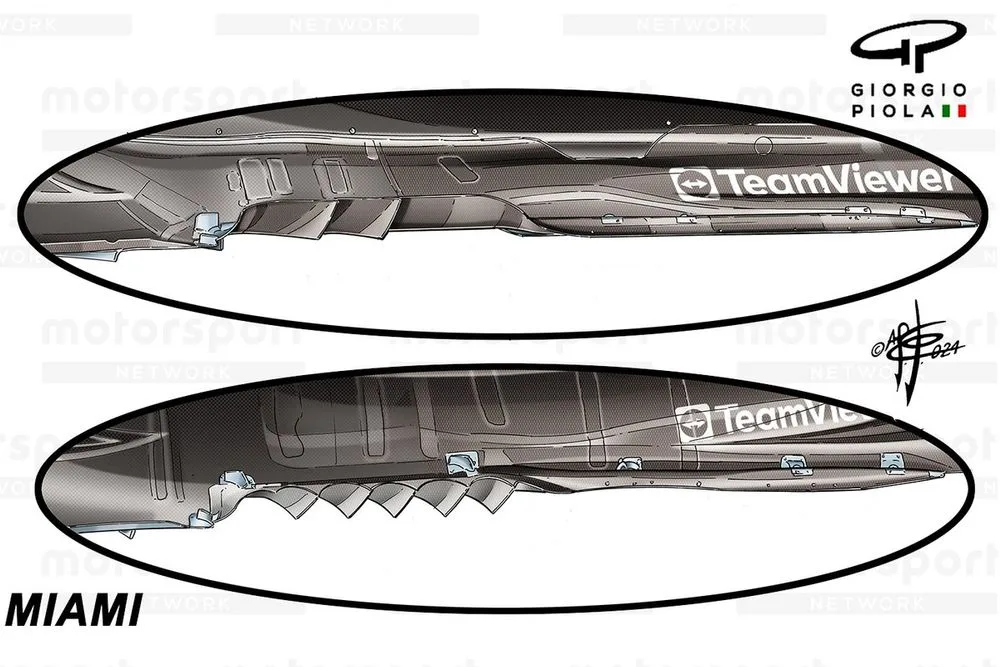Mercedes started the season with a W15 that proved a tricky beast for both Lewis Hamilton and George Russell.
With the team having no immediate answer about how best to get its car to perform in both high and low-speed corners, much of the early season effort was in getting to the bottom of the issues at stake.
But as it finally unlocked what it needed to do, its factory was moved on to a war footing to deliver update packages that have helped transform its performance envelope and resulted in its first non-sprint podium of the season in Canada.
And while there has been much focus on the new front wing that first made an appearance in Monaco, the start of how Mercedes turned things around actually goes back to a few races before.
In fact, aside from a small alteration to the halo fairing and the aerodynamic furniture attached that arrived in China, the first big batch of new parts arrived at the Miami Grand Prix.
The Miami developments
This update package for Miami included some track-specific modifications to aid the drivers and engineers in finding a more appropriate set-up for the challenges posed.
There was also a trimmed front wing, a modification to the angle of the front track rod and a larger louvred panel for cooling on the side of the engine cover.
Mercedes W15 floors comparison, Miami GP
Photo by: Giorgio Piola
More importantly, though, the floor and edge wing had been fettled as part of a longer-term plan to improve the W15’s performance and ability to deal with fluctuating ride heights.
At this stage, we were unable to appreciate the scope of the changes made to the underfloor, as it was hidden away out of sight.
But, given there was visible change on the upper surfaces, there was undoubtedly a considerable amount of work that had been undertaken to improve the geometries beneath.
Allied to this were the changes to the edge wing, which saw the number of strakes housed within the upturned section at the front of the assembly increased from two to five, whilst their size and geometries were also altered to match the increase in camber the element had received.
These dimensional alterations also resulted in changes to the position, size and shape of the bracketry holding the edge wing to the floor, to account for the change in loads, whilst the tail section of the surface was also minimally adjusted too.
Imola’s new parts exploited an old idea

Mercedes W15 rear wing Imola comparison
Photo by: Giorgio…
Click Here to Read the Full Original Article at Motorsport.com – Formula 1 – Stories…

